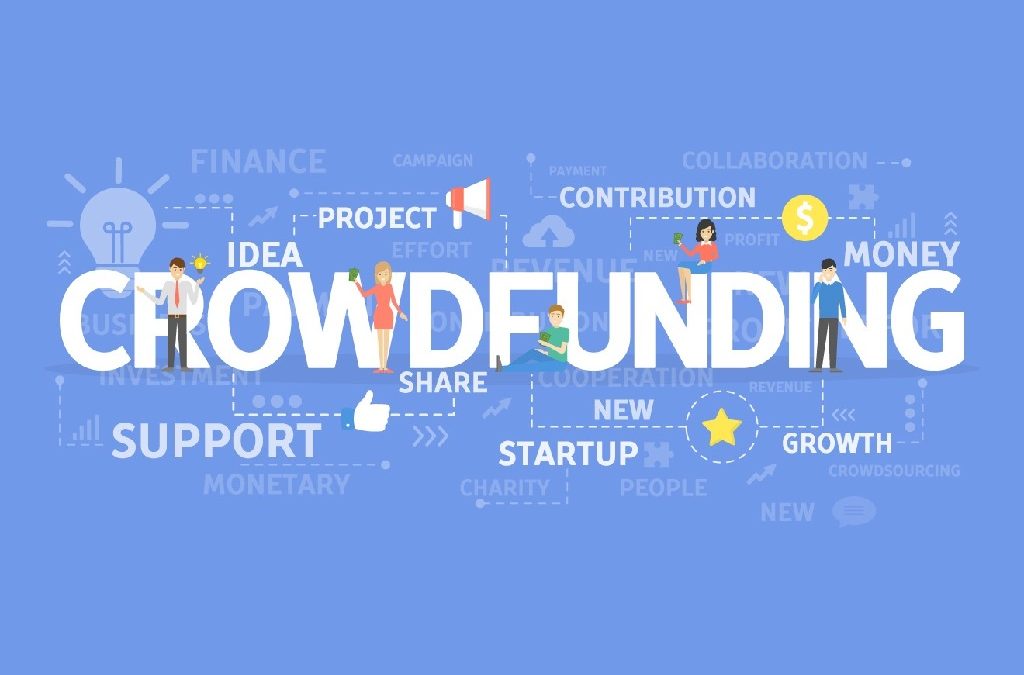Crowdfunding for Production Startups: How to Fund Your Product Idea

Step-by-step guide to adding Visa gift card to Amazon
August 11, 2025
Honda Service Pricing Trends: Understanding Regional Cost Variations
August 14, 2025Starting a production company requires significant capital investment. Many entrepreneurs struggle to secure traditional funding for their innovative product ideas. However, crowdfunding has emerged as a viable alternative that connects startups directly with potential customers and investors. Companies like Carryback Financing specialize in helping businesses explore various funding options, including crowdfunding solutions.
Crowdfunding allows entrepreneurs to raise money from a large number of people, typically through online platforms. This approach has revolutionized how production startups access capital. Instead of relying solely on banks or venture capitalists, founders can now pitch their ideas directly to the public. Additionally, crowdfunding for production startups offers more than just funding – it provides market validation and builds a customer base before production begins.
The beauty of crowdfunding lies in its democratic nature. People support projects they believe in, creating a community around your product. Therefore, successful campaigns often result in loyal customers who become brand ambassadors. This organic marketing can prove invaluable for new businesses entering competitive markets.
Table of Contents
ToggleUnderstanding Crowdfunding Models

Different crowdfunding models serve various business needs. Reward-based crowdfunding remains the most popular choice for production startups. Platforms like Kickstarter and Indiegogo allow backers to pre-order products or receive perks in exchange for their support.
Equity crowdfunding represents another option where investors receive company shares. However, this model involves more complex regulations and may not suit all production startups. Furthermore, debt crowdfunding enables businesses to borrow money from multiple lenders, creating loan agreements with specific repayment terms.
Each model has distinct advantages and requirements. Reward-based campaigns work well for consumer products with broad appeal. Meanwhile, equity crowdfunding suits companies seeking larger investments and willing to give up ownership stakes.
Top Crowdfunding Platforms for Production Startups
Kickstarter leads the reward-based crowdfunding space, particularly for innovative products and creative projects. The platform has an all-or-nothing funding model, meaning projects must reach their goal to receive any money. This approach encourages realistic goal-setting and comprehensive campaign planning.
Indiegogo offers more flexibility with both all-or-nothing and flexible funding options. Flexible funding allows startups to keep whatever money they raise, even if they don’t reach their target. Additionally, Indiegogo provides InDemand campaigns for continued fundraising after the initial campaign ends.
GoFundMe works better for personal causes but can support small-scale production projects. However, it lacks the built-in audience of backers specifically looking for innovative products. Therefore, marketing becomes more challenging on this platform.
SeedInvest and StartEngine focus on equity crowdfunding for more established businesses. These platforms require extensive documentation and legal compliance but can raise larger amounts from accredited investors.
Creating a Compelling Campaign
A successful crowdfunding campaign starts with a clear value proposition. Your product must solve a real problem or fulfill a genuine need. Furthermore, you need to communicate this value effectively through your campaign page.
High-quality visuals make or break crowdfunding campaigns. Professional product photos, demonstration videos, and clear infographics help potential backers understand your offering. Moreover, videos should show the product in action and highlight its unique features.
Your campaign story should connect emotionally with backers while maintaining credibility. Share your background, explain your motivation, and describe the journey that led to your product idea. However, avoid overly personal details that don’t relate to your business.
Transparent communication builds trust with potential supporters. Include detailed specifications, production timelines, and potential risks. Additionally, explain how you’ll use the funds and what backers can expect throughout the process.
Preparing for Your Crowdfunding Launch
Thorough preparation determines campaign success more than any other factor. Start building your audience months before launching your campaign. Social media followers, email subscribers, and industry contacts form your initial supporter base.
Create prototypes or proof-of-concept models to demonstrate your product’s viability. Backers need evidence that you can deliver on your promises. Furthermore, professional prototypes help calculate accurate production costs and timelines.
Develop a comprehensive marketing strategy that extends beyond the crowdfunding platform. Content marketing, influencer partnerships, and media outreach can significantly expand your reach. Therefore, allocate time and budget for promotional activities throughout your campaign.
Set realistic funding goals based on actual production needs. Factor in platform fees, manufacturing costs, shipping expenses, and unexpected challenges. Additionally, research similar successful campaigns to gauge appropriate funding targets.
Common Challenges and Solutions
Manufacturing delays represent the biggest risk for production startups using crowdfunding. Supply chain issues, quality problems, or design changes can push back delivery dates. However, transparent communication with backers helps maintain support during difficult periods.
Intellectual property theft concerns many entrepreneurs considering crowdfunding. Public campaigns expose your ideas to potential competitors. Therefore, consider filing provisional patents before launching your campaign to establish some legal protection.
Fulfillment logistics often overwhelm first-time entrepreneurs. Shipping hundreds or thousands of units requires careful planning and reliable partners. Additionally, international shipping adds complexity with customs regulations and varying delivery costs.
Managing backer expectations throughout the production process requires ongoing communication. Regular updates, behind-the-scenes content, and honest problem-solving maintain supporter confidence. Furthermore, over-communicating beats leaving backers wondering about progress.
Maximizing Your Success Rate
Early momentum proves crucial for crowdfunding success. The first 48 hours often determine whether algorithms promote your campaign to wider audiences. Therefore, mobilize your personal network to back your project immediately upon launch.
Stretch goals encourage continued backing after reaching your initial target. Plan additional features or products that enhance your main offering. However, ensure these additions won’t complicate production or delay delivery significantly.
Engage actively with your community throughout the campaign. Respond to comments, answer questions, and thank supporters personally when possible. Additionally, user-generated content from excited backers can boost credibility and attract new supporters.
Consider running a pre-launch campaign on platforms like LaunchBoom or Funded.Today. These services help build email lists and create buzz before your official crowdfunding launch. Furthermore, they provide valuable market research data to refine your approach.
Read More Also: Step-by-step guide to adding Visa gift card to Amazon
Post-Campaign Considerations
Successfully funding your campaign marks just the beginning of your journey. Now you must deliver on your promises while maintaining supporter engagement. Regular updates keep backers informed and excited about receiving their rewards.
Use this period to build lasting relationships with your supporter community. These early adopters often become repeat customers and brand advocates. Therefore, consider creating exclusive communities or loyalty programs for your crowdfunding backers.
Plan for scaling production beyond your initial crowdfunding commitments. Successful campaigns often generate additional demand through media coverage and word-of-mouth marketing. Additionally, retail partnerships may emerge from increased visibility.
Read More Also: Average Commercial Electricity Rate in Miami, FL
Conclusion
Crowdfunding for production startups offers an accessible path to funding innovative product ideas. Success requires careful preparation, compelling storytelling, and transparent communication with supporters. While challenges exist, the benefits extend beyond mere funding to include market validation and community building.
The key lies in understanding your chosen platform, preparing thoroughly, and maintaining realistic expectations throughout the process. Additionally, remember that crowdfunding represents just one funding option among many available to production startups.
Whether you choose reward-based, equity, or debt crowdfunding, focus on delivering genuine value to your supporters. This approach not only increases your chances of campaign success but also builds the foundation for long-term business growth.
Frequently Asked Questions
What is the success rate for crowdfunding campaigns?
Overall success rates vary by platform, with Kickstarter reporting approximately 37% of projects reaching their funding goals. However, success rates improve significantly for well-prepared campaigns with existing audiences and strong marketing strategies.
How much money can production startups realistically raise through crowdfunding?
Most successful production startup campaigns raise between $10,000 and $100,000. Exceptional projects with broad appeal can raise millions, while niche products might successfully fund with smaller amounts. Your target should reflect actual production needs rather than aspirational goals.
What percentage of funds do crowdfunding platforms take?
Most platforms charge 3-5% of funds raised, plus payment processing fees of 3-5%. Additional costs may include marketing services, fulfillment support, or premium features. Factor these expenses into your funding goal calculations.
How long should a crowdfunding campaign run?
Most platforms recommend 30-60 day campaigns. Shorter campaigns create urgency but limit time for momentum building. Longer campaigns risk losing supporter interest and may signal lack of confidence in your project.
Can international startups use crowdfunding platforms?
Many platforms accept international projects, though requirements vary. You may need local banking arrangements or partner with domestic entities. Additionally, consider currency fluctuations, international shipping costs, and tax implications for global campaigns.
Warning: Trying to access array offset on value of type null in /home/speakyma/public_html/checkyourhud.com/wp-content/themes/betheme/includes/content-single.php on line 286


